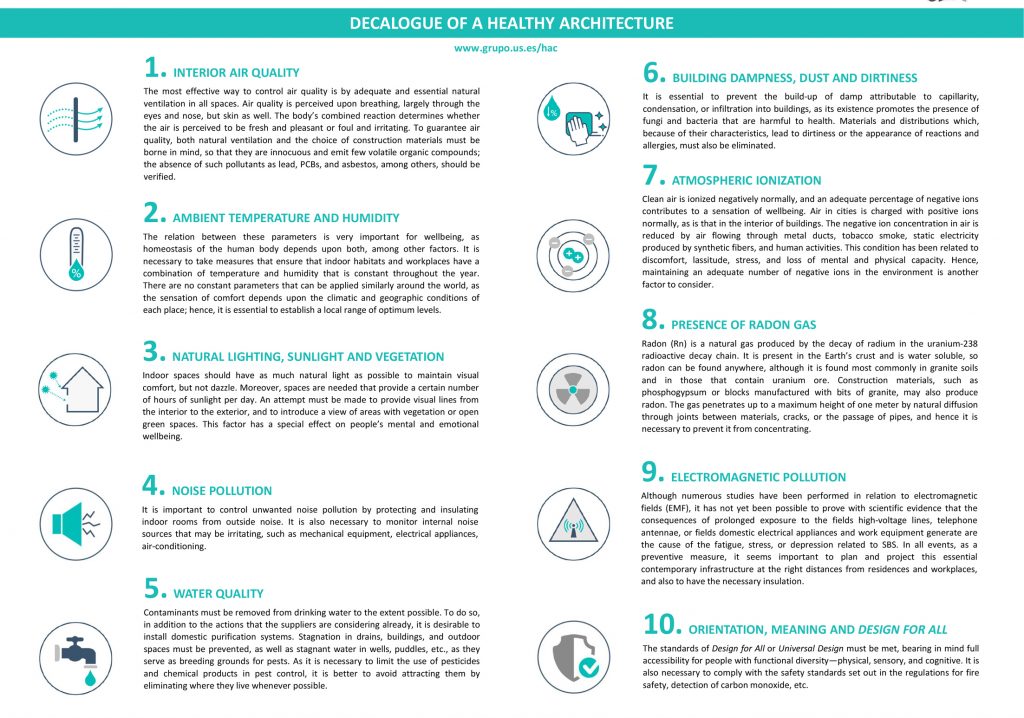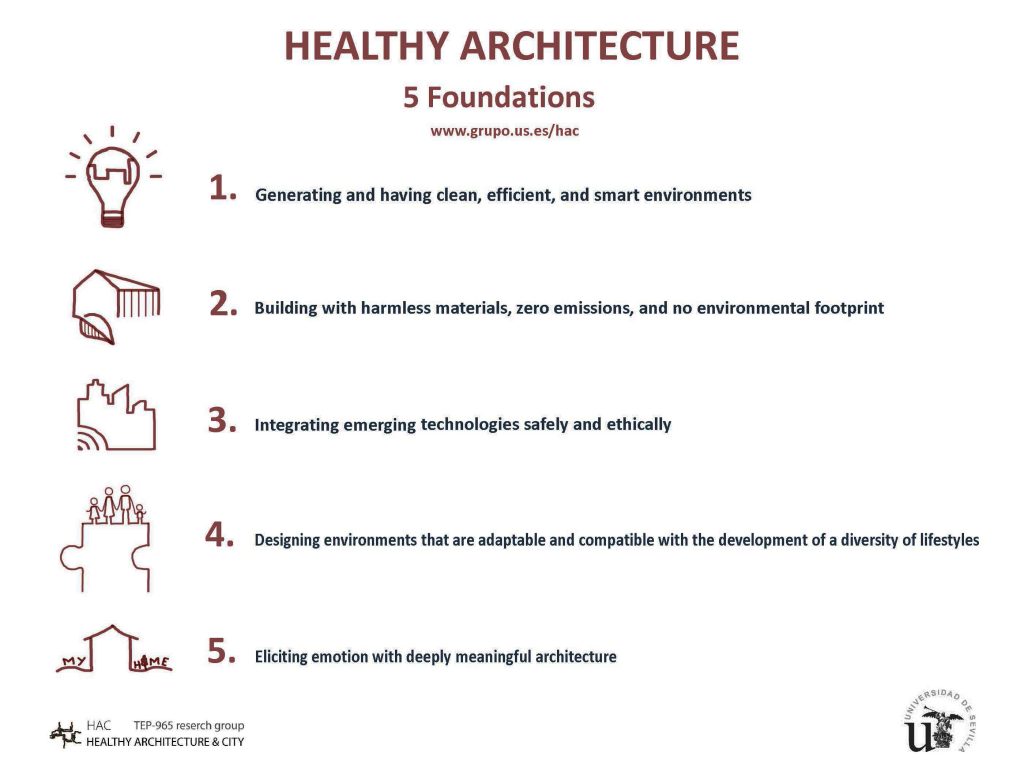HEALTHY ARCHITECTURE
In 1945, Henry Sigerist, Historian and prestigious Health Professional, was the first to refer to the promotion of health and its environment as one of the four fundamental actions in medical care, followed by disease prevention, cure and rehabilitation. In 1986, the Ottawa Charter established that health promotion consists of providing people with the necessary means to improve their health, and to exercise greater control over it. From this declaration, different plans arose, promoted by the World Health Organization (WHO), aimed at creating Healthy Environments. In the same year, the Healthy Cities Project was created, which was implemented in Spain under the name of the Spanish Network of Healthy Cities. This had the aim of promoting and protecting the health and well-being of its citizens, through the necessary interrelation between aspects and factors, which influence health and political, economic, cultural, social and environmental sectors. One year after the Ottawa Declaration, the requirement for healthy housing in cities was established.
An environment is identified as having a defined physical space, for a group of people with precise functions who use it, and which has a specific organisational structure. It is a space related to the social sphere in which human beings inhabit and interact with each other. A healthy environment is a space which supports and offers protection for health, allowing people to expand their capacities and develop their autonomy, regarding health. All the places where people live should be healthy environments: the home, their neighbourhood community, their workplaces and the city itself. It is also necessary that these spaces are provided with health resources and opportunities, especially for those focused on the most disadvantaged social groups, both in the socioeconomic field and with some type of illness.

This perspective reveals how important it is to understand and plan the place where we carry out the activities of daily life, as a whole, which must be balanced to promote health conditions which produce an increase in people’s quality of life. This physical environment is especially important when it shelters a person who is ill or prone to illness, but it becomes fundamental when it houses older adults (>65 years). Housing becomes another element of prevention and a direct action in the care and attention to the needs of these vulnerable groups.
Architectural improvement in safety, accessibility, autonomy and quality of life can be achieved with measures, such as: the generation of clean environments built with suitable materials; the interrelation between the interior and exterior; environments with specific control in air conditioning systems; the incorporation of air or natural light; and, the introduction of techniques, such as chromotherapy, light therapy, aromatherapy, music therapy, etc. The results that are being obtained in the application of these techniques, in current construction, indicate good design, oriented towards people’s health, produces social, economic and environmental benefits.
Concomitantly, it generates added value in city planning, producing contexts and spaces which produce greater comfort and well-being, and which are close to the current demands of society. In the global world, and in the hyper-connected society that characterises the 21st century, the user or inhabitant knows perfectly well what is positive for them, what food they should or should not consume, what activities are best for their physical condition, and the importance of both their physical and psychological state. The same applies to materials, spaces and living environments.
Human beings have always surrounded themselves with what they have considered most beneficial for their health. Taking care of yourself and the environment means significant long-term savings for users, companies, administrations and the State, preventing and avoiding certain problems passing into the health-hospital environment. It is more profitable to invest in a good architectural project or design, which anticipates the healthy aspects of the building, than to solve the damages caused by not having taken them into account.


